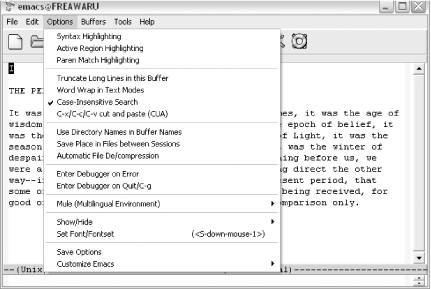
GNU Emacs is the most popular and widespread of the Emacs family of editors. It is also the most powerful and flexible. Unlike all other text editors, GNU Emacs is a complete working environment—you can stay within Emacs all day without leaving.
, 3rd Edition tells readers how to get started with the GNU Emacs editor. It is a thorough guide that will also "grow" with you: as you become more proficient, this book will help you learn how to use Emacs more effectively. It takes you from basic Emacs usage (simple text editing) to moderately complicated customization and programming.The third edition of
describes Emacs 21.3 from the ground up, including new user interface features such as an icon-based toolbar and an interactive interface to Emacs customization. A new chapter details how to install and run Emacs on Mac OS X, Windows, and Linux, including tips for using Emacs effectively on those platforms.
, third edition, covers:
Learning GNU Emacs
Learning GNU Emacs
Learning GNU Emacs
• How to edit files with Emacs
• Using the operating system shell through Emacs
• How to use multiple buffers, windows, and frames
• Customizing Emacs interactively and through startup files
• Writing macros to circumvent repetitious tasks
• Emacs as a programming environment for Java, C++, and Perl, among others
• Using Emacs as an integrated development environment (IDE)
• Integrating Emacs with CVS, Subversion and other change control systems for projects with multiple developers
• Writing HTML, XHTML, and XML with Emacs
• The basics of Emacs Lisp
The book is aimed at new Emacs users, whether or not they are programmers. Also useful for readers switching from other Emacs implementations to GNU Emacs.
10.1.5 The Options Menu
10.1.5 The Options Menu
You can also access Custom through a bit of a back door: the Options menu. Figure 10-6 shows the Options menu. There are three key entries at this top level:
Figure 10-6. The Options menu (Windows)

Show/Hide
Allows you to turn on (and off) several features of Emacs including the menu bar and toolbar.
Save Options
A quick shortcut to saving any changes you make to Emacs through the Options menu.
Customize Emacs
A submenu that allows you to tweak common items such as fonts and variables as well as helping you browse and search through the options available to Custom.





